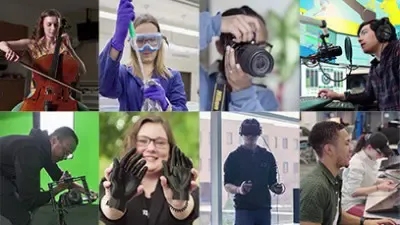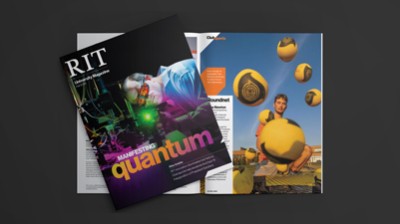Life Science Seminar: An adventure in molecular-scale-bio-musicology

Life Science Seminar
An adventure in molecular-scale-bio-musicology
Dr. Greg Babbit
Associate Professor, Life Sciences
Rochester Institute of Technology
Abstract:
Like animal vocalization and display, human singing and dancing allows non-verbal establishment of behavioral co-relation (i.e. correlation) between individuals. The predictable structure of music is its most defining mathematical property, allowing human synchronization of both physical behavior and emotion. In the biomolecular world, some proteins also interact in groups to achieve strong spatiotemporal co-relationships. This is prominent in amyloids, where many fibrils individually conform to an overall solenoid structure. We hypothesize that the vibrational frequencies captured during amyloid protein interactions may also exhibit elements of musicality related to this prosociality. Here, we develop a non-abstract data sonification method for computer-simulated molecular dynamic interactions. We apply autocorrelational and spectral cross-correlational analyses to a collection of sounds, defining 11 acoustic features that allow accurate machine learning classification of music from other types of natural sounds. By analyzing statistical shifts in these features defining musicality, we demonstrate that sounds of amyloid interactions are more musical than less structurally conformed protein interactions, primarily due to a significant shift in the first order autocorrelation. We also find that music itself has less feature shift away from animal vocalization than does human speech, suggesting that some elements of human musicality may have evolutionarily predated human language.
Intended Audience:
All are Welcome!
To request an interpreter, please visit myaccess.rit.edu
Event Snapshot
When and Where
Who
This is an RIT Only Event
Interpreter Requested?
No









